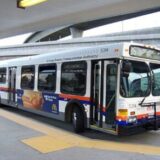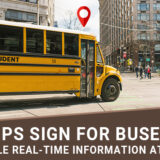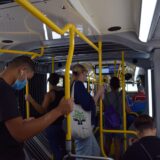An intelligent transportation or transit system (ITS) is a combination of advanced applications and devices aiming to provide innovative traffic management services that allow users to make smarter, safer, and better informed use of transportation networks.
You have probably seen it in action in the form of cameras being used to monitor congested intersections, emergency calling when accidents occur, or GPS signs that show updated speed limit changes according to weather and traffic conditions. Furthermore, ITS technologies are applied in highway management to facilitate optimal route timing and planning, with the goal of reducing congestion. It is also used by city administrators to maintain better traffic systems and keep their cities moving efficiently.
In terms of public transportation, ITS technologies are used for route guidance and trip optimization. For example, some of the best bus companies today use a combination of passenger information systems and GPS transit signs to keep their passengers in the loop about the current location of their buses, the next stop, the most recent schedule, and any delays or changes that may affect their journey.
How your fleet can benefit from intelligent transport and transit systems
A proficient and well organized use of ITS technologies can help public transportation fleets—such as buses and trolleys—to make their operations more efficient while improving the experience of their passengers. For example, robust passenger information systems can provide:
- Data collection – Data can be gathered using different types of hardware devices such as GPS vehicle locators, cameras, sensors, automatic vehicle identifiers, passenger counting, etc. These devices can record information such as traffic count, travel time and speed, delays, surveillance, vehicle performance and more. They are connected to servers in data collection centers that store this information for analysis.
- Data analysis – Information that’s been received is processed further to rectify errors. Data synthesis, cleaning, and adaptive local analysis are employed to predict traffic scenarios and determine what information is appropriate for assessment.
- Data transmission and delivery – Successful ITS implementation is contingent upon real time communication. After analysis, data collected from ITS hardware has to be communicated to passengers through on-board and in-station transit signs and GPS sign systems. Travel related announcements can also be sent to passengers online or via SMS.
Your drivers and your passengers will appreciate having access to real-time information such as route changes, diversions, road accidents that affect their trip and much more. Intelligent transportation and transit systems can help you provide pertinent information to riders as well as operators.
No wonder the most successful bus fleets today have started using passenger information systems and other intelligent transportation and transit solutions to improve ridership loyalty and overall profitability. If you are serious about growing your transit business and improving its future readiness, it’s time you explore the benefits of these sustems.
Get complete ITS technologies from Transign
Transign’s complete ITS solutions are designed to meet the highest standards for various transportation applications. While we started out as a transit sign company, we have invested in technologies and partnerships with different companies to provide passenger information systems and integrated GPS sign solutions for bus fleets. We can help you smoothly carry your passengers to their destination safely and on time.
Our easy-to-use passenger information systems will enable your fleet managers to make better decisions. From overseeing driver performance to improving overall passenger experience, our comprehensive ITS solution will help you achieve your goals. We have designed technologies that not only provide in-vehicle security and rider counting, but also integrate information regarding current traffic situations to increase the reliability of your fleet and help your managers act accordingly based on actionable data.
















